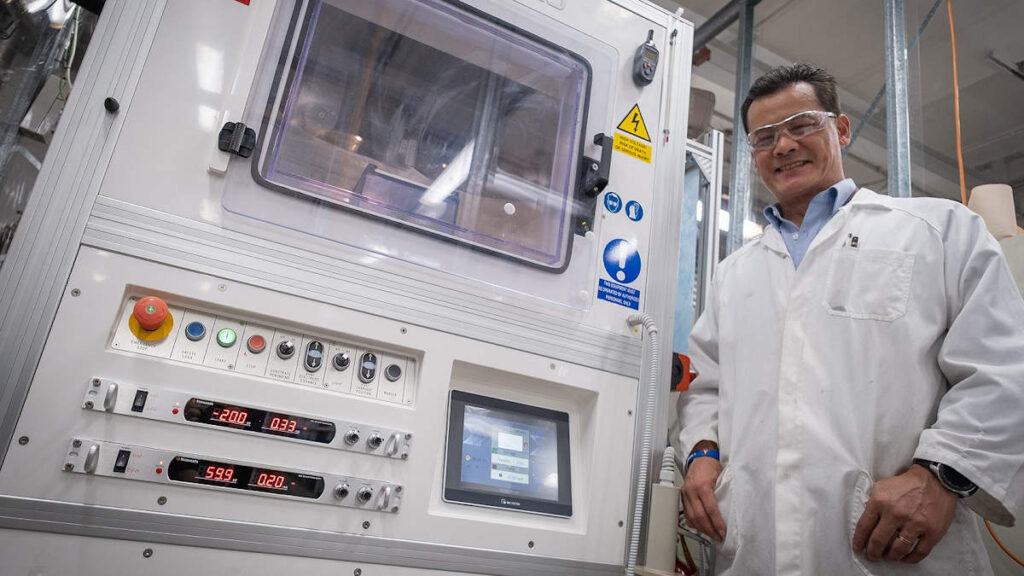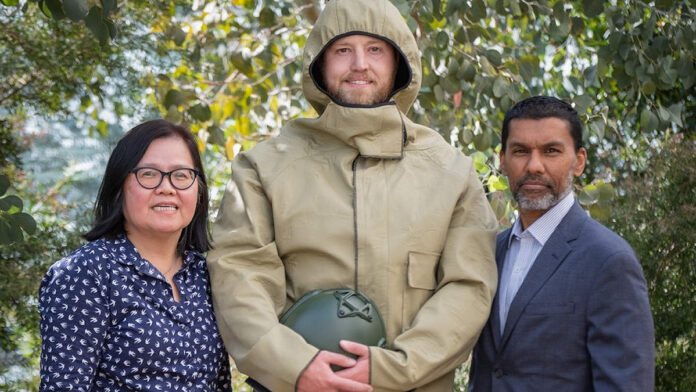CSIRO Prototype Nanofibre Uniform Protects From Chemical And Biochemical Threats.
CSIRO Prototype Nanofibre Uniform – Researchers at Australia’s national science agency, CSIRO, have developed a next-generation uniform prototype that employs nanofibres to safeguard wearers from chemical and biological threats.
The lightweight fabric filters out harmful particles while remaining light-weight and breathable, keeping the wearer comfortable in extreme temperatures. The prototype uniform has the potential to significantly improve the level of protection for soldiers and emergency responders.
The secret to the breakthrough lies in nanofibres – incredibly fine filaments at least 100 times thinner than a human hair. These filaments have an extraordinary surface area that prevents harmful aerosol particles from passing through. What sets them apart is their breathability. Unlike traditional protective materials, nanofibre layers allow air to circulate freely – ensuring the wearer remains comfortable even in extreme conditions.
CSIRO Manufacturing Research unit director, Dr Marcus Zipper said the textile innovation was the result of collaboration with industry and research partners, including DMTC.
“Our nanofibre technology, pioneered by CSIRO scientists, has the potential to significantly improve the level of protection soldiers’ uniforms provide and can also be used for non-military applications, including protecting emergency responders and hazmat crews,” Dr Zipper said.
“CSIRO research and development in materials science looks to improve how a particular material functions – we work across a broad range of advanced materials including metals, composites, polymers, adsorbents and nanofibres,” Dr Zipper said.
Funded by the Department of Defence, development of the nanofibre suit prototype was coordinated by DMTC Limited. Also involved in supporting the project were Bruck Textiles, Defence Science and Technology Group, and RMIT University.

Head of program management at DMTC, Deepak Ganga, said the new prototype uniform could deliver a significant leap forward in soldier protection, ensuring better comfort and mobility in harsh environments.
“This project demonstrates the power of collaboration,” Ganga said. “CSIRO’s scientific excellence in nanofibre research has been matched with the expertise of our partners in textiles, defence science, and manufacturing.
“This has resulted in a groundbreaking solution that offers benefits for Australian troops, for the first responder community and, potentially for Australia’s alliance partners,” he said.
Meanwhile, CSIRO project lead, Dr Yen Truong, said key to the prototype’s success lies in nanofibre technology, developed by CSIRO scientists.
“We harnessed the unique properties of nanofibres to create a lightweight fabric that effectively filters out harmful particles while remaining highly breathable,” Dr Truong said.
“In rigorous testing, the prototype surpassed all performance targets for air filtration, air permeability, thermal comfort, and chemical protection.
“This means it effectively filters pollutants from the air, allows for breathability, maintains comfortable temperatures even in extreme conditions, and offers superior protection from hazardous chemicals.”
You can learn more about the project here or read more SEN news here.
“CSIRO Prototype Nanofibre Uniform Protects From Chemical And Biochemical Threats.”












